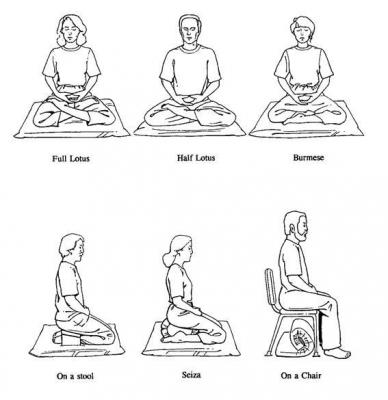
In the last post we discussed breath meditation practice as a beginning point for the development of meditation.
http://contemplative-studies.org/wp/index.php/2015/07/23/208/
Today we will discuss breath meditation further and suggest some next steps. We’d appreciate hearing comments and suggestions from others. There are many paths!
After you feel comfortable with counting the breaths on both the inhale and the exhale, the next step is to just count on the exhale and do not count on the inhale. So, it becomes inhale, exhale “one”, inhale, exhale “two”, etc. up to ten and then back to one. This is slightly more difficult than counting on both inhale and exhale as this provides the mind more opportunity to drift off.
You will note that we used the expression when “you feel comfortable with” as opposed to when “you master.” This is because you probably will never completely master any of the practices. That is not the point. The techniques are aides to quieting the mind and they work to a degree. But, the mind is far more out of control than can be tamed by these simple methods. Just look for progress, where the mind becomes quieter than it previously was. Don’t expect to perfect it, or even do it very well, just develop longer periods of quiet over time.
You can probably extrapolate what the next step should be after you become comfortable with counting the outbreaths only. You begin to just follow the breathing without counting at all. In this practice you try to pay close and continuous attention to all of the sensations associated with breathing. You pay attention to the movement of you belly, diaphragm, and chest as they expand and contract. You pay attention to the sensations of the air moving through your nostrils and windpipe. It’s simply paying attention to all of the sensations arising from the process of breathing. You can even take note of how the sensations in your belly arise and fall and then for a moment disappear only to reappear shortly after.
This like all of the preceding practices is focused, but there is now a wider focus on the entire process of breathing and all of the sensations arising from throughout the body as you breathe. This is even more difficult to maintain. At the beginning there is a lot to occupy the mind, but as you continue the mind gets bored and inevitably drifts away. As we tell everyone, be prepared to fail. This form of meditation is a continuous process of focus, mind wandering, detecting that the mind has wandered away and a return to focus.
Don’t feel bad. This is what happens to everyone. Just look for a slow increase in the amount of time you are focused and a decrease in the time spent mind wandering. This can take a while, sometimes many weeks. But, if you stick with it, it will happen. It is sometimes a good strategy when your mind is busy and focus is difficult to return to the previous practice of counting the breaths for a brief period to regain focus and then go back to simply following the sensations of breathing.
At the end of each session, spend a few minutes reviewing what you have just experienced. You can note as before that is extremely difficult to control your mind. Look though at what you’re trying to do. You’re asking your mind to control your mind. You’re trying to use an uncontrollable entity to control an uncontrollable entity. No wonder you repeatedly fail.
Eventually in meditation practice you will need to completely give up trying to control the mind. But, this is for a later practice. For now, do the best you can trying to quiet the wild creature that you call your mind.
CMCS






